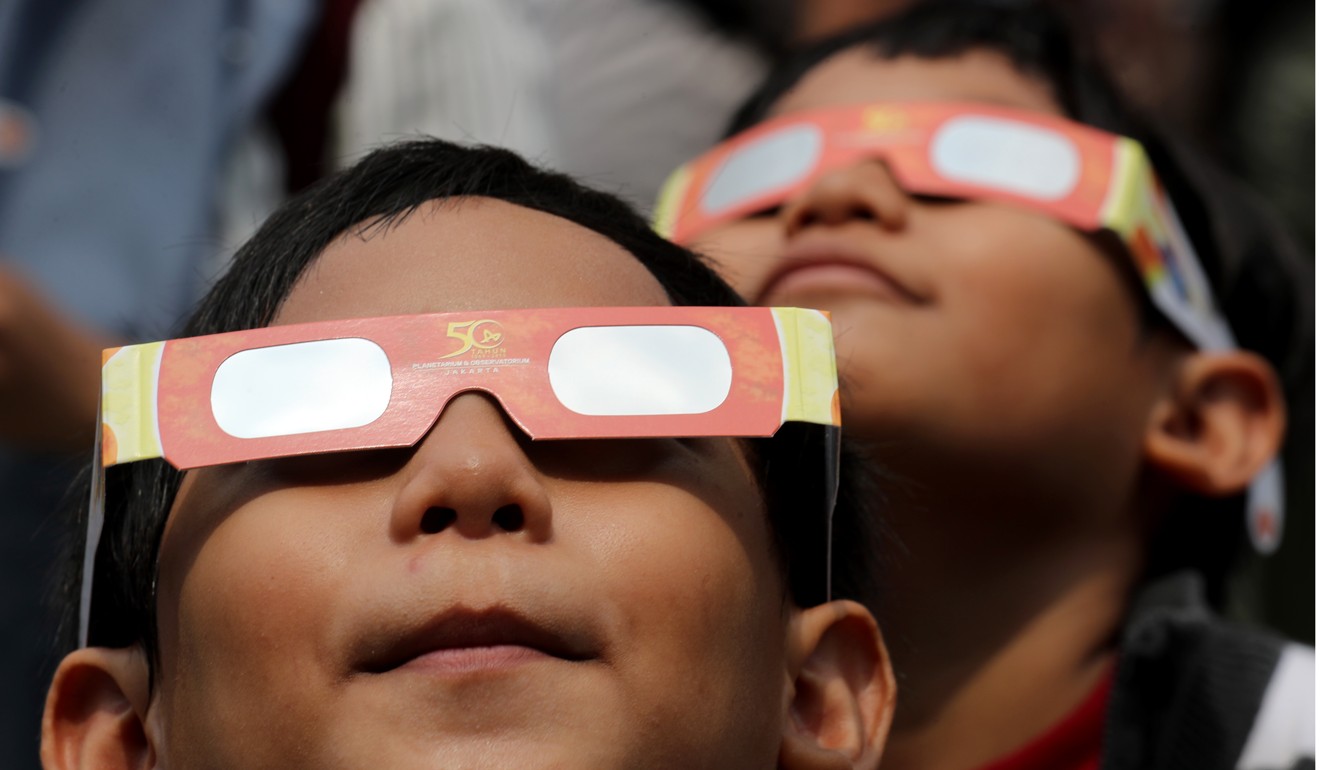
‘Ring of fire’ solar eclipse sweeps across India, Malaysia, Singapore, Indonesia and the Philippines
- The phenomenon, known as an annular eclipse, occurs when the Moon is not close enough to the Earth to completely obscure the Sun
- It was visible on Thursday along a path that’s 118 kilometres wide, covering Malaysia, Singapore, Indonesia and the Philippines
While these types of eclipses occur every year or two, they are only visible from a narrow band of Earth each time and it can be decades before the same pattern is repeated.

The ring effect lasted longest just east of the Indonesian island of Pulau Gin Besar, according to astronomy news website Space.com, but – weather permitting – it was also visible across Indonesia’s Sumatra and Sarawak, in Singapore and from just south of General Santos City in the Philippines.
Hundreds of amateur astronomers and photographers set up by Singapore’s harbour for what some described as a “once in a lifetime” event.
“The next one will happen in about 40 years, I think,” said Jason Teng, 37, who took the day off work to photograph the eclipse, using a special solar filter on his telescope as there is no safe period to observe an annular solar eclipse.
Alexander Alin, 45, a geophysicist from Germany, travels around the world following eclipses.
“It’s only two minutes, but it’s so intense that you talk about it with your friends, family, for the next month,” Alin said.

At Singapore’s city centre, about 1,000 office workers descended on Hong Lim Park, which took on a festive air with live music and picnickers galore.
People clapped with joy, and loud gasps and cheers could be heard when the event occurred at 1.22pm, during which the sky dimmed for a couple of minutes.
Reza Pahlevi, a 21-year-old student, said it was his first time seeing such a cosmic event. “It’s worth coming here, it’s a rare event.”

In southern India, people gathered on the beaches in Tamil Nadu to watch the event.
The eclipse even affected cricket, with play delayed by two hours in a first-class match between Mumbai and Rajkot.
The eastern state of Orissa declared a public holiday, with all government offices, courts, schools and colleges closed.

“Like many Indians I was enthusiastic,” Modi said. “Unfortunately, I could not see the Sun due to cloud cover but I did catch glimpses of the eclipse in Kozhikode and other parts on live stream.”

In Indonesia, hundreds of people gathered outside Jakarta Planetarium to watch the event using protective glasses supplied by the planetarium, hoping for clear skies at the time of maximum eclipse.
“I could see the eclipse this morning and now am very excited to see the peak though now it is cloudy,” said Chandra Ayu Dewi, 39, who arrived at 7am with her children.
Outside the narrow band where the “ring of fire” effect can be observed, sky watchers would see a partial solar eclipse.

Although it will last only 38 seconds at most, this one will be so near a total solar eclipse that there will be many astronomical phenomena to look for, including bubbling beads of light around the moon.
Additional reporting by AP, SCMP’s Asia desk

.png?itok=arIb17P0)